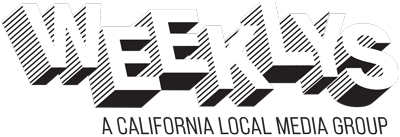
The inventor and artist Robert Seals has spent the majority of his almost-80 years on Earth transforming junk into desirable objects.
His invention (and company) Klean Kanteen became famous for its metallic water bottle. But his finely crafted recycled-metal sculptures are almost invisible. You have to seek them out.
The Los Gatan, who lives on a remote hilltop compound on the border with Santa Cruz County, handed over the management of the pioneering company almost 20 years ago. At the time, the metal bottles embodied the idea of a market for environmentally friendly and healthy drinkware. (The company claims that it was the first to gain commercial traction back in 2004.)
Seals created a prototype around 2002 after hearing a talk at a Northern Californian festival by the environmental activist Julia Butterfly Hill.
“Everywhere I was going, I was talking about the need to create a stainless steel water bottle,” Hill said in an interview at Seals’ house. (She lives on his property.)
She’d started a business creating reusable containers for food after she reached global fame and cult status with her more than two-year tree-sit on “Luna,” a 200-foot redwood on a Pacific Lumber logging property in Humboldt County. “It was when I went up in the tree I had the aha moment. Because, before I went up there, I never thought about it—just like billions of other people don’t think about it—that every paper cup is a tree. Every plastic lid is drilling for oil. Every plastic to-go container is drilling for oil.”
At the time, she also noted the growing trend in plastic packaging and water bottles, and how it posed breast cancer risks.
These days, Klean Kanteen bottles are ubiquitous at conferences, playgrounds and large retailers like major supermarkets and outdoor gear stores. But unless you look at the front of the Monterey Bay National Marine Sanctuary’s Exploration Center in Santa Cruz, you’re unlikely to see much of Seals’ finely crafted recycled metallic wall art reliefs. That is, unless you stop in at Marine Life Studies. (Purchases fund the nonprofit’s programs.)

MLS is headquartered in Moss Landing and is focused on gathering data about—and saving—cetaceans from entanglements with fishing and crabbing gear. Its unpaid founder and executive director, Peggy Stap, works to protect, and educate about, sea life. MLS’s other main mission is to educate underserved kids, and the broader public, about ocean fauna. Its efforts are powered by an army of volunteers (including this author’s teen daughter this summer) and coordinated by Stap and Stephanie Marcos, a full-time operations manager.
A local university student staffs its gift shop, which features art by local ocean-inspired artists, such as framed prints, cards and stickers from famed Santa Cruz artist Doug Ross. You’ll also find kelp pressings from Santa Cruz resident Winnie Mulé, crocheted jellies from Sabrina Gill of Carmel and greeting cards by renowned cetacean artist Pieter Folkens of Benicia.
It was Seals’ life-long love affair with metallica art that gave him the idea to create the water bottle prototype, and the skills to deliver. His detailed and often playful recycled metallic wall-relief sculptures—of dolphins, squid, whales, turtles, pelicans and anglerfish—make the denizens of the ocean visible. They’re available for sale at the MLS shop in Moss Landing.
Seals started creating sculptures from recycled metal as a child. But he only started seriously developing his technique at what is now California State University at Chico, experimenting with hammers by welding.
“I’d go out to the dump and get scrap fenders off of cars and discarded lawn chairs and coat hangers, because I couldn’t afford a welding rod from a welding shop,” he recalled, speaking on an enclosed porch surrounded by his creations. Music he’d composed played in the background.
These days, you can see his process in a YouTube video. His metal wall sculptures are made from water tanks that residents of the Santa Cruz Mountains ask him to remove. He has dozens of other kinds of sculptures across his property’s 50 acres, both outside and inside of his house. The work available at MLS represents just a tiny fraction of what he’s been up to since the 1960s.
Seals’ focus these days is still the environment—in the most literal and abstract senses. He runs an educational nonprofit called Mother Nature’s Temple, which provides outdoor experiences to underserved elementary school kids in the Monterey Bay area. They can come and learn about redwood ecology on his property, or take trips with a naturalist on a 38-foot boat with a capacity for 32 passengers.
He and Klean Kanteen cofounder Kathy Staychock are also creating a modernized version of a stainless steel drinking bottle called Beverage Safe. It’s scheduled to launch sometime in 2025. They’ve also started another company called “Fire & Rain.” The company aims to empower homeowners to safely evacuate and prevent destruction from wildfire independent of PG&E, Cal Fire or HOA water systems. (The idea is that certain kinds of fire dynamics would immediately trigger an outdoor sprinkler system.)
The idea emerged from insights into the wildfire dynamics that Seals gleaned from work as a firefighter over the years to stay solvent as he was making his art. The firefighting stint occurred before he became an entrepreneur. This is his third company. (He also started a business that made a compact tool to fix bikes.)
“People have a lot of good ideas,” he said. “But they don’t act on them.”









